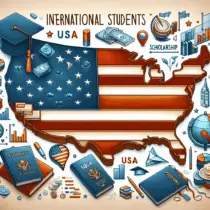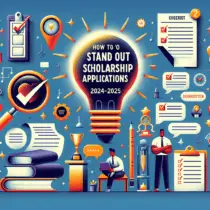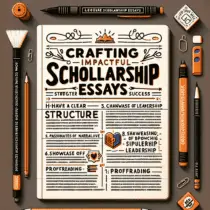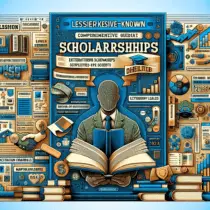Scholarships for International Students in the USA: Lesser-Known Options
Deciding to study in the United States can be an incredible opportunity for international students. However, with hefty tuition fees, accommodation costs, and other expenses, affording education in the USA can be challenging. While many students are aware of popular scholarships such as the Fulbright Program and the Rhodes Scholarship, there are numerous lesser-known options that can help ease the financial burden. Here is a comprehensive look at some of these lesser-known scholarships that international students should consider.
1. The Next Gen Scholarship Fund
The Next Gen Scholarship Fund is designed to provide financial support to international students in the Washington, DC metro area. The scholarship awards are generally around $1,000 and are open to all international students, especially those who demonstrate determination, leadership, and resilience in their academic pursuits. Applicants need to submit transcripts, a personal statement, and letters of recommendation.
2. East-West Center Scholarships and Fellowships
The East-West Center in Hawaii is a unique institution that promotes better relations and understanding between Asia, the Pacific, and the United States through cooperative study, training, and research. The Center offers several scholarship and fellowship programs tailored for students from Asia and the Pacific islands. Some of these scholarships cover full tuition, accommodation, and even stipends for living expenses.
3. The P.E.O. International Peace Scholarship
The P.E.O. International Peace Scholarship Fund (IPS) provides scholarships specifically for international women students. It is not based on a full-ride but can cover a significant portion of tuition and other educational expenses. The goal of the IPS is to promote peace and understanding through education. Applicants must have a plan to return to their home countries within 24 months of completing their degree.
4. Hubert Humphrey Fellowship Program
Although largely aimed at professional development rather than academic degrees, the Hubert Humphrey Fellowship Program provides an excellent opportunity for experienced professionals from designated countries. The Fellowship includes major costs like tuition, books, living allowance, and medical insurance. This is particularly beneficial for mid-career professionals who want to enrich their knowledge and return home to contribute to their communities.
5. Joint Japan World Bank Graduate Scholarship Program
The Joint Japan World Bank Graduate Scholarship Program (JJ/WBG) offers scholarships to students from developing countries to pursue graduate studies related to development. This scholarship is aimed at strengthening the skills and expertise of future leaders in areas critical for the development of their countries. The program covers tuition, a monthly living stipend, round-trip airfare, health insurance, and travel allowances.
6. American University Emerging Global Leader Scholarship
American University in Washington, D.C., offers the Emerging Global Leader Scholarship to international students who have overcome various challenges and plan to return to improve their countries. This highly competitive scholarship covers full tuition and board for one international student who displays leadership potential and a commitment to community service.
7. ICSP Scholarship at the University of Oregon
The International Cultural Service Program (ICSP) at the University of Oregon offers academic scholarships to international students who can demonstrate financial need and exceptional merit. As a unique feature, students who receive this scholarship must contribute cultural service hours to promote understanding and cultural diversity across the university and in the Eugene community. Scholarships range from $7,000 to $27,000 per year.
8. The Margaret McNamara Memorial Fund
The Margaret McNamara Memorial Fund (MMMF) provides educational grants to women from developing countries. These grants aim to enable women committed to improving the lives of women and children in their home countries. Grants are awarded based on financial need, leadership skills, and a commitment to return to their countries.
9. Global Beca Santander
Banco Santander offers scholarships for international students through their Global Beca Santander program. Though known primarily in Spanish-speaking countries, Santander Universities’ collaboration spans globally and covers various fields of study. These scholarships often cover partial tuition fees, living expenses, and sometimes provide practical internships, adding a significant boost to an international student’s resume.
10. The Aga Khan Foundation International Scholarship Program
The Aga Khan Foundation provides a limited number of scholarships each year for outstanding students from developing countries who have no other means of financing their studies. Scholarships are awarded on a 50% grant and 50% loan basis through a competitive application process. The aim is to develop effective scholars and leaders, mainly in developing countries.
11. The United World Colleges (UWC) Scholarships
United World Colleges (UWC) offers scholarships for high school students and has partnerships with several universities providing scholarships for international students transitioning to higher education. These scholarships are uniquely designed to be holistic, focusing on academics, extracurricular activities, and community service. Depending on the partnership with each university, these scholarships can cover a substantial portion of the total educational expenses.
12. Rotary Foundation Global Grant Scholarships
Rotary Foundation Global Grant Scholarships offer funding for international students who are pursuing graduate-level coursework or research in one of Rotary’s six areas of focus: peace and conflict prevention, disease prevention, water and sanitation, maternal and child health, education, and economic development. This grant covers tuition, travel expenses, supplies, and room and board, offering up to $30,000 annually.
13. The University of Minnesota International Student Scholarships
The University of Minnesota provides multiple scholarship opportunities specifically for international students. One of these is the Maroon Global Excellence Scholarship, which is merit-based and automatically considers new, incoming international freshmen and transfer students. Awards range from $4,000 to $25,000 per year, significantly reducing tuition fees.
14. Wells Mountain Initiative (WMI) Scholars Program
The Wells Mountain Initiative (WMI) Scholars Program aids students from low-and-middle-income countries who are committed to local community service and having a long-term impact in their region. The scholarship supports tuition fees, books, and related costs up to $3,000 per year. WMI Scholars are encouraged to give back to their communities during breaks and after graduation.
15. The Civil Society Leadership Awards (CSLA)
CSLA, offered by the Open Society Foundations, provides full scholarships for master’s degree studies for individuals who demonstrate both academic and professional excellence as well as a strong commitment to leading positive social change in their communities. This scholarship covers all academic fees, living expenses, and travel costs.
Conclusion
While the financial aspects of studying in the USA may seem daunting, these lesser-known scholarships present numerous avenues for international students to alleviate the burden. By thoroughly researching and applying to multiple scholarship opportunities, students can make their American education dream a reality. Exploring various scholarships and being well-prepared with necessary documents such as transcripts, recommendation letters, and personal statements greatly increases the chances of receiving financial aid.
International students should strive to seek out these lesser-known scholarships, as they can be a powerful resource in pursuing higher education in the USA. With appropriate planning and perseverance, achieving an education in one of the world’s most coveted academic destinations becomes an attainable goal.






